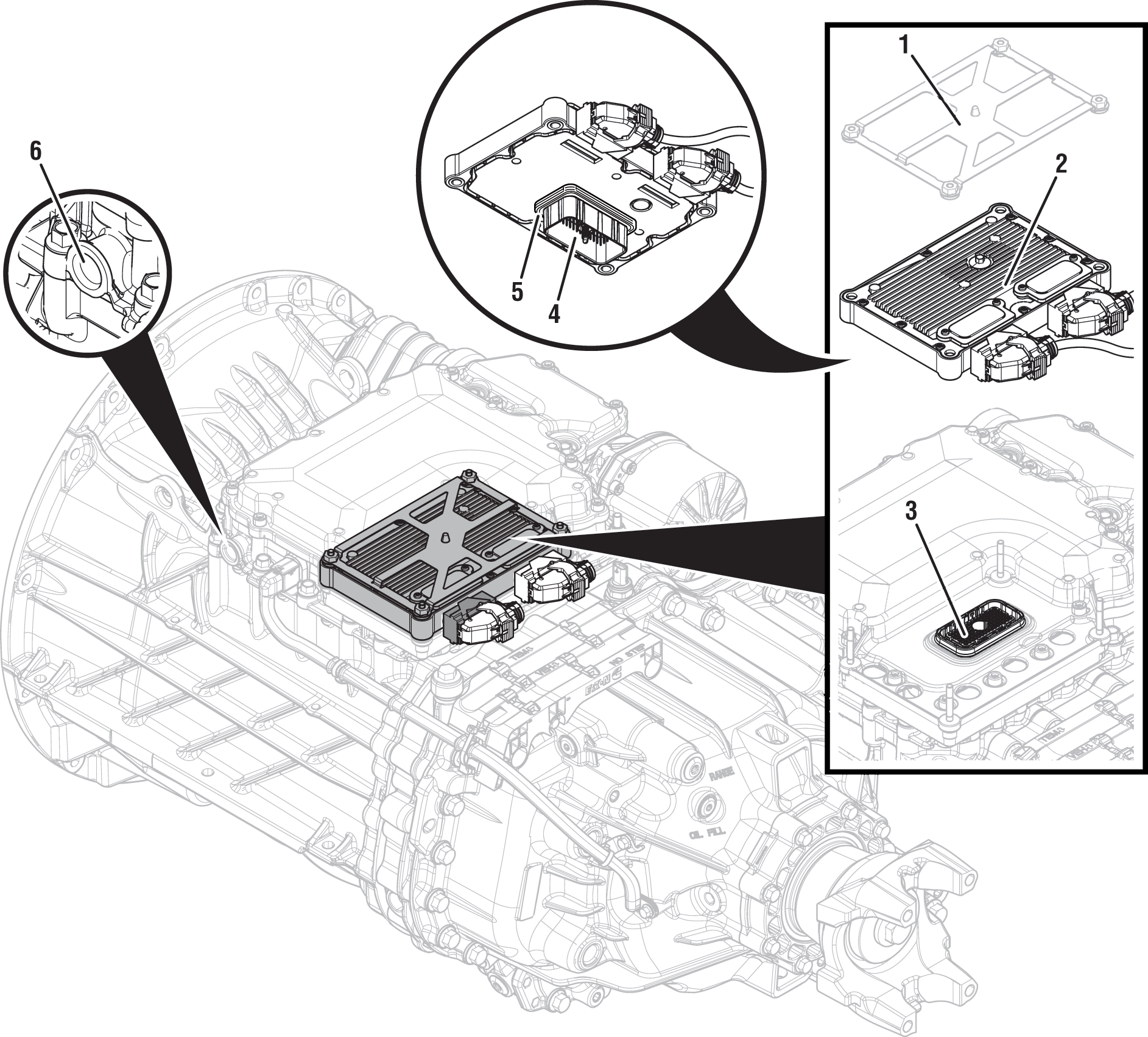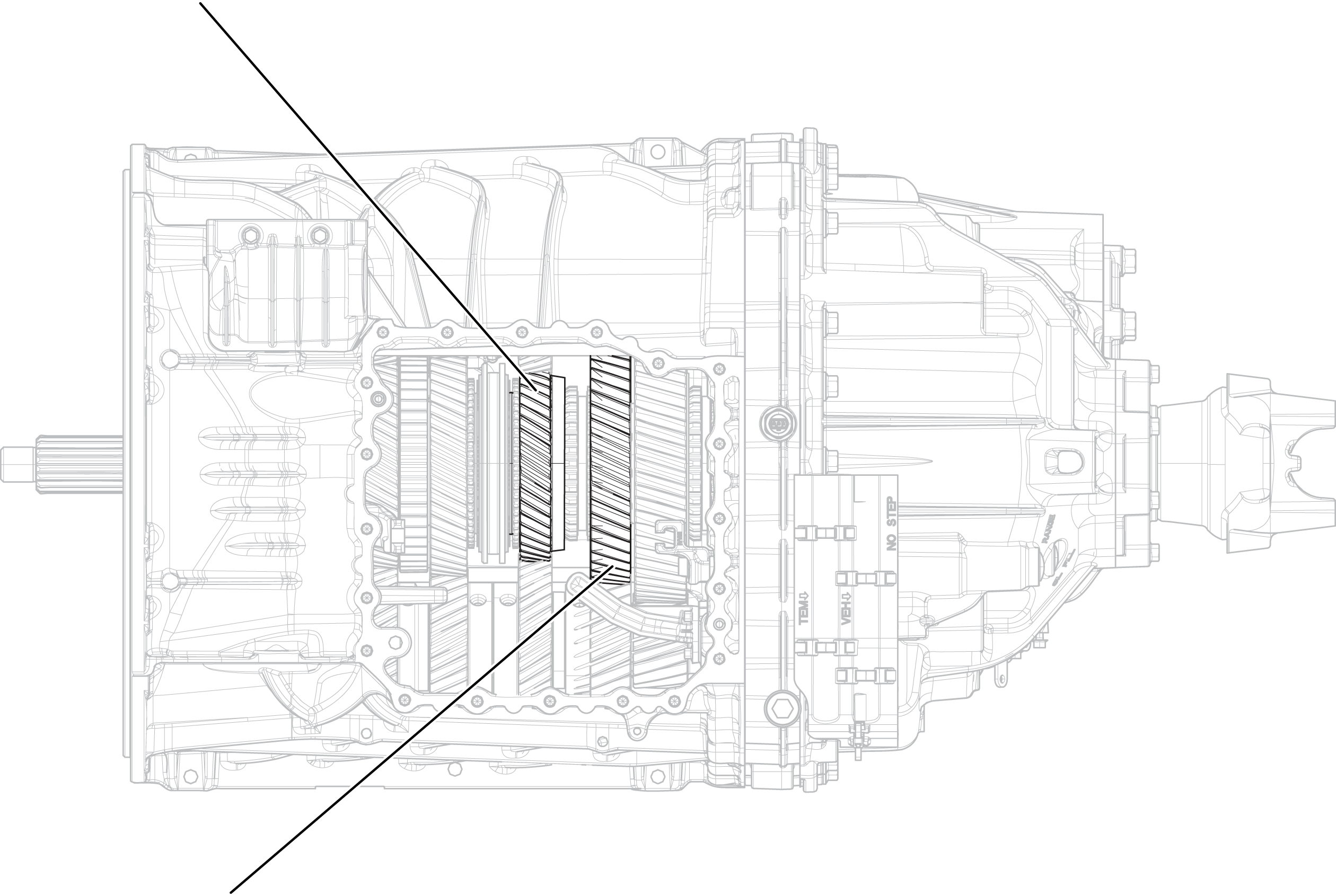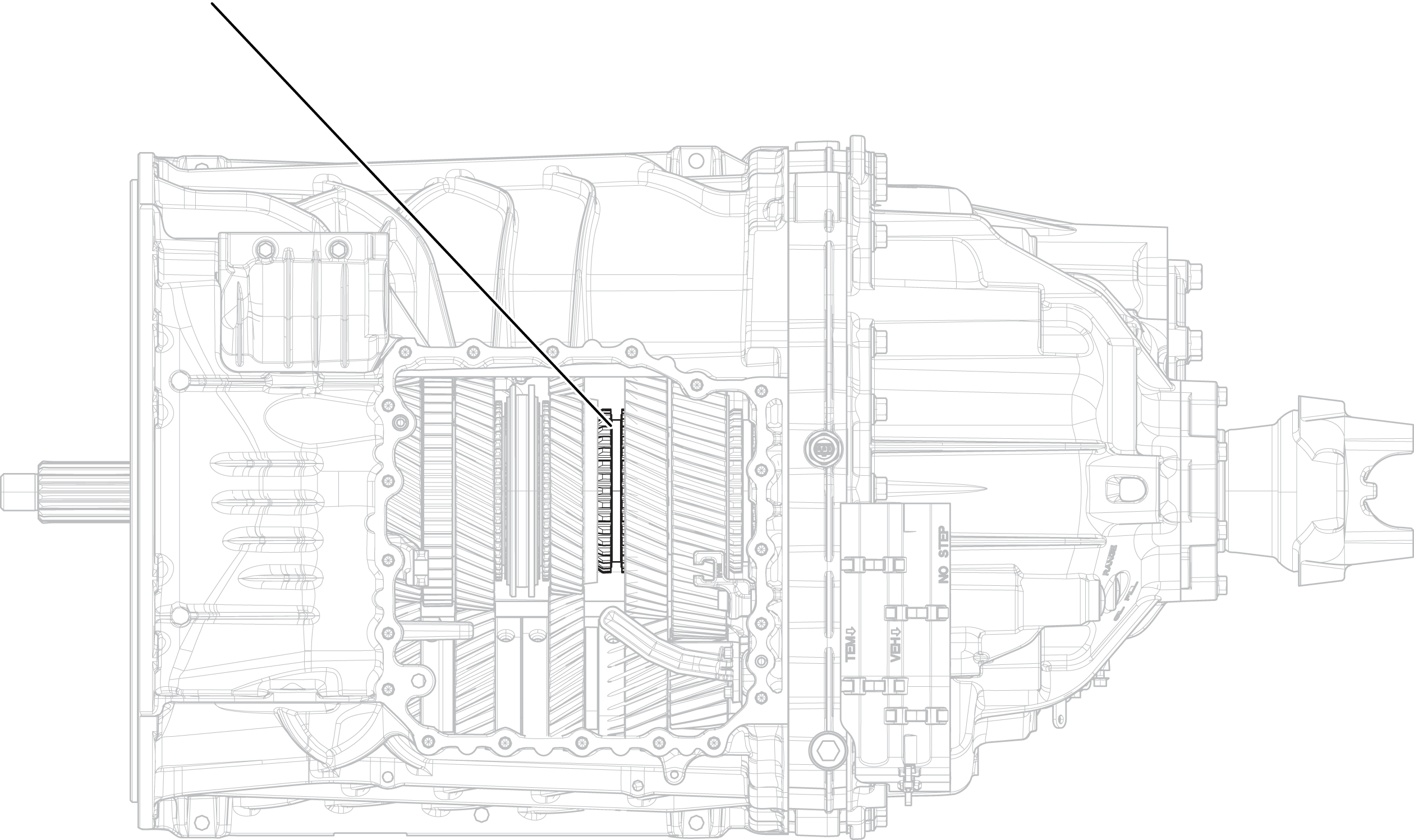Fault Code 760: Rail C Operation
J1939: SA 3 SPN 6146 FMI 0, 1, 2, 7, 10, 14, 15, 16, 17, 18, 20, 21
Overview
The Endurant XD Series transmissions are equipped with five Shift Rails: A, B, C, D, and E. The shift rails are mounted in shift rail cylinders in the Mechatronic Transmission Module (MTM). Solenoid valves direct vehicle Supply Air to and from the shift rail cylinders for shift rail actuation. Position sensors monitor shift rail positions and speed sensors monitor shaft speeds.
The sensor information is provided to the Transmission Control Module (TCM) for the purpose of making shift decisions, confirming gear engagement, and monitoring shift rail positions. The TCM compares the shift rail commands to the shift rail positions and shaft speeds (ratio calculation) to ensure the transmission is operating properly.
The sensors and shift rails are located in the MTM and connected to the TCM at the 74-Way Transmission Harness Connector.
Detection
The TCM monitors Shift Rail C operation. If a system failure is detected, the fault is set Active.
Conditions to Set Fault Code Active
FMI 0 – Data Valid But Above Normal (Most Severe): Rail C unable to disengage Splitter Gear, move aft, for 2 seconds.
FMI 1 – Data Valid But Below Normal (Most Severe): Rail C unable to disengage Driven Gear 2nd, move fore, for 2 seconds.
FMI 2 – Data Erratic: During a rail calibration, Rail C unable to move to neutral position.
FMI 7 – Mechanical System Not Responding: Rail C unable move from neutral position toward Splitter Gear, move fore, for 2 seconds.
FMI 10 – Abnormal Rate of Change: During a rail calibration, Rail C Position Sensor unable to confirm low rail velocity.
FMI 14 – Special Instructions: Rail C unable to move from neutral position toward Driven Gear 2nd, move aft, for 2 seconds.
FMI 15 – Data Valid but Above Normal (Least Severe): Rail C unable to engage Splitter Gear, move fore, for 2 seconds.
FMI 16 - Data Valid but Above Normal (Moderately Severe): Rail C unable to move from Splitter Gear to neutral position, move aft, for 2 seconds.
FMI 17 – Data Valid but Below Normal (Least Severe): Rail C unable to engage Driven Gear 2nd, move aft, for 2 seconds.
FMI 18 – Data Valid but Below Normal (Moderately Severe): Rail C unable to move from Driven Gear 2nd to neutral position, move fore, for 2 seconds.
FMI 20 – Data Drifted High: During a rail calibration, Rail C travel was greater than expected.
FMI 21 – Data Drifted Low: During a rail calibration, Rail C travel was less than expected.
Fallback
FMI 0, 1:
- Amber warning lamp on
- Rail C movement prohibited
- If vehicle is moving and no start gear is available
- Red stop lamp on
FMI 2, 10, 20, 21:
If Rail C position is known and Rail C is either fully engaged or fully disengaged:
- Amber warning lamp on
- Shift Rail C movement prohibited
If Rail C position is not known and Rail C is not fully engaged or fully disengaged:
- Shift Rail C movement prohibited
- Shift Rail D movement prohibited
- Inertia Brake activation prohibited
- Non-Neutral modes prohibited
- PTO Mode prohibited
- If vehicle is moving:
- Red stop lamp on
FMI 7, 15:
- Amber warning lamp on
- Splitter Gear engagement prohibited
- If vehicle is moving and no start gear available:
- Red stop lamp on
FMI 14, 17:
- Amber warning lamp on
- Driven Gear 2nd engagement prohibited
- If vehicle is moving and no start gear available:
- Red stop lamp on
FMI 16, 18:
- Amber warning lamp on
- If the vehicle is not moving:
- Rail C movement to neutral position prohibited
- If vehicle is moving and no start gear available:
- Red stop lamp on
Conditions to Set Fault Code Inactive
FMI 0, 1, 7, 14, 16, 18: Fault condition no longer exists for 1 second.
FMI 2, 10, 15, 17, 20, 21: Key cycle and fault condition no longer exists.
Possible Causes
All FMIs:
- MTM
- Contamination from vehicle air system
- Air leaks
- Rail C Fore Solenoid – internal failure
- Rail C Aft Solenoid – internal failure
- Rail C Position Sensor – in range internal failure
- Rail C shift cylinder – stuck piston or damaged seals
- Rail C shift rail or yoke – broken
- Internal transmission
- Rail C Sliding Clutch
- Splitter Gear
- Driven Gear 2nd
Additional Tools
- Endurant XD Service Manual TRSM0960
Component Identification
 |
1. Transmission Control Module (TCM) Cover 2. Transmission Control Module (TCM) 3. 74-Way Transmission Harness Connector (TCM-side) 4. 74-Way Transmission Harness Connector (MTM-side) 5. Transmission Control Module (TCM) Seal 6. MTM Air Inlet Port |
Fault Code 760 Troubleshooting
Set vehicle parking brake and chock wheels.
Record transmission fault codes, FMIs, occurrences, and timestamps from Service Activity Report created during the Diagnostic Procedure.
If Fault Code 760 is Active or Inactive, Go to Step B
Key off.
Refer to OEM guidelines and vent vehicle air supply line to MTM.
Refer to OEM guidelines and remove vehicle air supply line at MTM.
Inspect vehicle air supply line and MTM air inlet port for contamination, moisture, corrosion and/or debris.
Note: Verify MTM inlet screen is installed and free of contamination and/or debris.

If contamination is found, refer to OEM guidelines for repair or replacement of vehicle air system. Replace Mechatronic Transmission Module (MTM) and Inertia Brake Assembly. Go to Step V
Note: MTM removal and installation requires transmission be removed from vehicle. Reference Endurant XD Service Manual TRSM0960, Transmission Removal Service Procedure.
If no contamination is found, Go to Step C
Remove MTM.
Note: MTM removal and installation requires transmission be removed from vehicle. Reference Endurant XD Service Manual TRSM0960, Transmission Removal Service Procedure.
Inspect Splitter Gear for excessive fore and aft movement.

Inspect Driven Gear 2nd for excessive fore and aft movement.
If excessive gear movement is evident, inspect Main Shaft Assembly for cause and repair. Go to Step V
If no excessive gear movement is evident, Go to Step D
Inspect Rail C Sliding Clutch yoke slot for wear.

Shift Rail C Sliding Clutch into neutral position (if necessary).
Shift Rail C Sliding Clutch into Splitter Gear engagement position (fore).
Inspect Driven Gear 2nd and Rail C Sliding Clutch clutching teeth for wear.
Return Rail C Sliding Clutch to neutral position.
Shift Rail C Sliding Clutch into Driven Gear 2nd engagement position (aft).
Inspect Splitter Gear and Rail C Sliding Clutch clutching teeth for wear.
Return Rail C Sliding Clutch to neutral position.
If Rail C Sliding Clutch shifts into all three positions and no clutching teeth wear is present, replace Mechatronic Transmission Module (MTM). Go to Step V
If Rail C Sliding Clutch does not shift into all three positions or clutching teeth wear is present, replace Rail C Sliding Clutch, Splitter Gear, Drive Gear 2nd and Mechatronic Transmission Module (MTM). Go to Step V
Key off.
Reconnect all connectors and verify all components are properly installed.
Key on with engine off.
Connect ServiceRanger.
Go To “Fault Codes”.
Select “Clear All Faults”.
Operate vehicle and attempt to reset the fault code or duplicate the previous complaint.
Check for fault codes using ServiceRanger.
If no fault codes set and vehicle operates properly, test complete.
If Fault Code 760 sets Active, Go to Step A
If a fault code other than 760 sets Active, troubleshoot per the Fault Code Isolation Procedure Index.